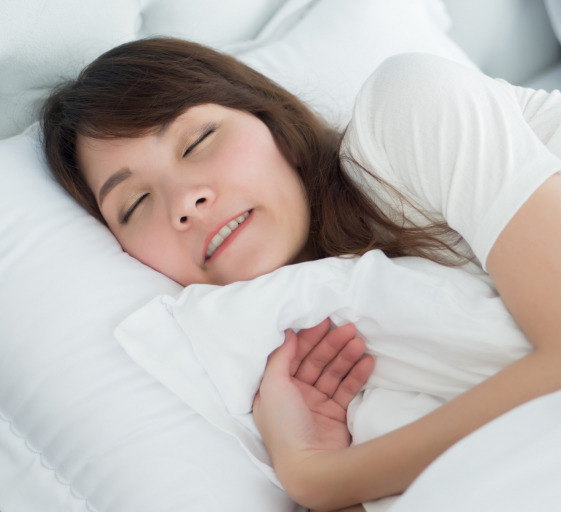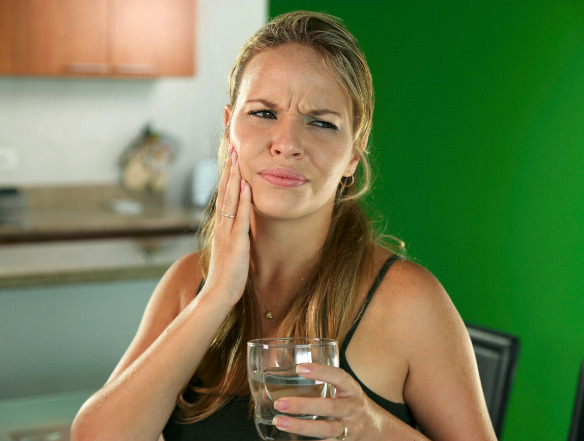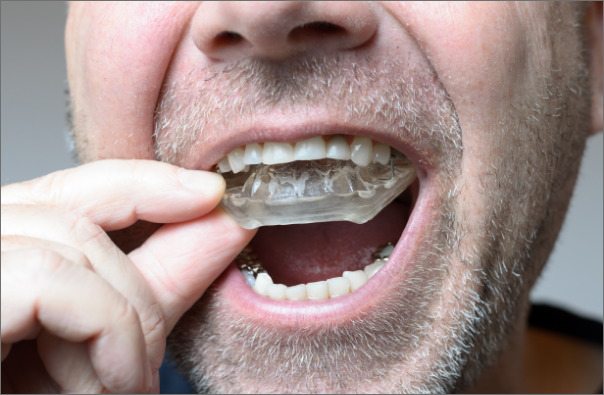
What is Teeth Grinding or Bruxism?
The intense pressure exerted during teeth grinding can strain the muscles around your jaw and face. This strain may then stimulate nerves that lead to the brain, potentially triggering migraines. Interestingly, many people who suffer from sleep bruxism also report suffering from headaches in the morning, which further strengthens the link between these two conditions.
Understanding bruxism is the first step towards dealing with it effectively. By recognizing the signs early and seeking professional advice, we can take measures to reduce its impact and prevent further complications, including the potential onset of migraines. The subsequent sections of this article will delve deeper into these preventative measures and potential treatment options.
The Two Types of Bruxism
Defining What a Headache Is
Main Types of Headaches
Continuing our exploration of headaches, it’s essential to distinguish between the different types and understand how they are characterized. Headaches can broadly be classified into three major types: tension-type headaches, migraines, and cluster headaches. Each has its unique characteristics, triggers, and treatment methods.
Tension-Type Headaches are the most common form of headache. They are often described as a constant pressure or tightness, like a band around the forehead or at the temples. They can last anywhere from 30 minutes to several days. While these headaches can cause discomfort, they typically do not interfere with activities, and most people can function effectively despite the pain.
Migraines are a more severe form of headache characterized by throbbing or pulsating pain, usually on one side of the head. These headaches often come with additional symptoms such as sensitivity to light, sound, or smell, nausea, and vomiting. Physical activity may worsen the pain, and those suffering from a migraine may need to rest in a quiet, dark room for relief. Migraines can last from a few hours to a few days.
Cluster Headaches are relatively rare but extremely painful headaches that occur in groups or clusters. The pain is typically severe and located around one eye or one side of the head. Symptoms can include redness and tearing in one or both eyes, a runny or blocked nose, and restlessness. These headaches can occur up to several times a day during a cluster period and then disappear for months or even years.
Secondary headaches are another category and are caused by underlying medical conditions, like sinus infections, neck injuries, or stroke. These headaches can have varied symptoms depending on the triggering condition and may disappear once the underlying issue is treated.
Recognizing the type of headache you’re experiencing is key to finding effective treatment and relief. As we delve further into the world of bruxism and headaches, we’ll particularly focus on migraines, which, as recent studies suggest, might be significantly linked to the grinding and clenching of our teeth.
Primary and Secondary
In order to understand the world of headaches, it’s essential to distinguish between primary and secondary headaches, two overarching categories that encompass various types of headaches.
Primary headaches are headaches in their own right—the headache itself is the main concern. They are not symptomatic of an underlying condition but are rather caused by overactivity or problems with the pain-sensitive structures in the head. This overactivity could involve blood vessels, muscles, and nerves of the head and neck, or they may be due to changes in chemical activity in the brain.
The three main types of primary headaches are tension-type headaches, migraines, and cluster headaches, each of which we’ve explored in the previous section. Tension-type headaches are typically mild to moderate and often feel like a tight band around the forehead. Migraines are more severe, with throbbing pain often localized to one side of the head, accompanied by other symptoms like nausea or light sensitivity. Cluster headaches, while less common, are extremely painful episodes of pain on one side of the head, often around the eye.

On the other hand, secondary headaches are symptoms that occur when another condition stimulates the pain-sensitive nerves of the head. In other words, they are a symptom of a disease or condition that can activate the pain-sensitive nerves of the head. Secondary headaches can be caused by a variety of medical conditions, ranging from sinus infections to dental issues, and from neck injuries to more serious conditions such as stroke or tumors.
The key to distinguishing primary and secondary headaches is to consider the nature of the headache and any accompanying symptoms. Primary headaches often have recognizable patterns and may run in families, suggesting a genetic component. Secondary headaches, meanwhile, are often accompanied by other symptoms related to the underlying cause and may occur suddenly or worsen with time.
Recognizing whether a headache is primary or secondary is crucial to getting the right treatment. As we venture further into the connection between bruxism and migraines—a type of primary headache—we hope to provide insights into potential causes and treatments for these conditions.
Tension-Type Headaches
Headache vs. Migraine: Is There a Difference?
Though often used interchangeably in everyday language, from a medical perspective, there’s a significant difference between a headache and a migraine. All migraines can be considered headaches, but not all headaches qualify as migraines.
A headache, in its most general sense, is any kind of pain in the region of the head or neck. The pain can range from mild to severe, and its duration can vary from a few minutes to several days. The source of the pain could be due to a variety of factors, including muscular tension, sinus congestion, or a reaction to certain foods or environmental factors.
Migraines, on the other hand, are a specific type of headache with distinct characteristics. They are often described as a severe, throbbing pain, usually on one side of the head, though it can affect both sides. Migraines often come with additional symptoms, such as nausea, vomiting, and sensitivity to light, sound, and sometimes smells. Some people may experience an “aura” before a migraine attack, characterized by visual disturbances like seeing flashing lights, zigzag lines, or temporarily losing vision. Physical activity often worsens the pain of a migraine, causing many people to seek rest in a quiet, dark room during an attack.
The primary difference between a general headache and a migraine is the additional symptoms (referred to as the migraine ‘complex’) and the severity of the pain. While most types of headaches can cause discomfort and inconvenience, migraines can be disabling and can significantly impact a person’s quality of life.
How Teeth Grinding Causes Migraines
Bruxism, both in its awake and sleep forms, involves the forceful contact of teeth, which results in an exertion of pressure on the structures surrounding the teeth. This includes the temporomandibular joint (TMJ)—the joint that connects your jaw to your skull—as well as the muscles and nerves around your mouth and face.
When the teeth are persistently clenched or ground together, this continuous strain can lead to overuse and fatigue of the masticatory muscles, the muscles responsible for chewing and closing the jaw. Over time, this overuse and fatigue can result in discomfort or pain, which can spread to encompass a larger area, including the sides of the head and the region around the temples—a location typically associated with tension-type headaches and migraines.
The trigeminal nerve, one of the major facial nerves, is also a key player in this scenario. This nerve is responsible for sensations in the face and motor functions such as biting and chewing. Prolonged or intense pressure from grinding or clenching can irritate or overstimulate the branches of the trigeminal nerve, causing pain signals to be sent to the brain.
Interestingly, overactivity of the trigeminal nerve is a common element in the onset of migraines. This nerve is thought to trigger the release of certain brain chemicals that lead to the inflammation and dilation of blood vessels in the brain, which in turn cause the severe throbbing pain characteristic of migraines.
While the exact relationship between bruxism and migraines is still under study, the current understanding suggests that the excessive strain on the masticatory muscles and the overstimulation of the trigeminal nerve caused by bruxism can potentially contribute to the onset of migraines. The relationship is complex and likely involves multiple factors, which emphasizes the need for comprehensive examination and individualized treatment approaches.
Bruxism Causes
Bruxism is a complex condition and, interestingly, it doesn’t have one singular cause. Rather, it’s believed to result from a combination of physical, psychological, and genetic factors.
Physical or physiological factors are often linked to the alignment of teeth and jaw. An abnormal bite, missing or crooked teeth, or an overbite can potentially lead to bruxism.

Additionally, medical conditions such as gastroesophageal reflux disease (GERD), sleep apnea, and other sleep disorders have been associated with an increased risk of developing bruxism.
Psychological factors such as stress, anxiety, anger, frustration, or tension can also contribute to bruxism. In fact, bruxism is often considered a coping strategy or a habit during concentration. It’s commonly observed during situations that cause emotional stress, such as driving in traffic, undergoing a challenging task, or dealing with work-related issues.
Another critical factor in the onset of bruxism is genetics. Studies suggest that individuals with close family members who experience bruxism are more likely to develop the condition themselves, indicating a possible genetic link.
Certain lifestyle factors, including smoking, heavy alcohol consumption, caffeine intake, and certain medications (such as antidepressants), may also increase the risk of bruxism.
Symptoms of Teeth Grinding
- Tooth sensitivity or pain: This may result from the wearing down of the enamel due to persistent grinding, exposing the underlying layers of the tooth.
- Damaged teeth: This can include chipped, flattened, fractured, or loose teeth. The wear on the teeth might be so much that the deeper layers of the tooth, such as the dentin, are exposed. This damage can lead to different dental health problems, including tooth decay and gum disease.
- Tired or tight jaw muscles: You may experience a dull, constant ache in the jaw, or the muscles may feel “tired,” particularly in the morning.
- Jaw, neck, or face pain or soreness: The tension and strain on the facial muscles caused by clenching can lead to discomfort or pain in these areas.
- Dull headache originating in the temples: The persistent tension can also lead to tension-type headaches.
- An increase in facial pain and headaches: Over time, the continual clenching and grinding can contribute to broader facial pain and even migraines.
- Disrupted sleep: The activity of bruxism may disrupt your sleep or your partner’s sleep.
- Damage from chewing on the inside of your cheek.
Morning Headaches and Migraines
As we delve further into the connection between bruxism and migraines, one crucial symptom that stands out is morning headaches.
Many individuals with bruxism wake up with a headache—a discomfort that is not just an average headache, but often a precursor or a form of a migraine. But why does this occur, and how does this relate to bruxism and migraines?
The consistent grinding and clenching of teeth during sleep exerts substantial pressure on the jaw muscles and the temporomandibular joint. This continuous strain can lead to a build-up of tension in these muscles, which in turn can result in a tension-type headache upon waking. The facial nerves, primarily the trigeminal nerve, also get excessively stimulated due to the overactivity of the jaw muscles, contributing further to the headache.
Furthermore, remember that the trigeminal nerve plays a critical role in the onset of migraines. Overstimulation of this nerve can trigger a series of reactions in the brain, leading to the release of certain chemicals that cause inflammation and dilation of blood vessels. This process, in turn, can initiate a migraine attack.
Thus, the headache that you wake up with may not just be a tension headache but could potentially evolve into a full-blown migraine, particularly if you’re predisposed to migraines. This possibility is one way bruxism and migraines may be linked.
Jaw Pain
Facial Pain
The repeated clenching and grinding of teeth don’t just impact the teeth themselves and the jaw; the repercussions can extend to cause discomfort or pain in the broader facial region.
Much of the facial pain associated with bruxism is due to the strain and overwork of the masticatory muscles, the muscles responsible for moving the jaw during chewing. The abnormal and excessive force exerted during episodes of bruxism can lead these muscles to fatigue and cause muscle aches and discomfort, similar to how any other muscle in your body might ache after a strenuous workout. This discomfort can radiate outwards, contributing to a general sensation of facial pain.
Another contributing factor to facial pain in bruxism is the overstimulation of the trigeminal nerve. This nerve is one of the largest nerves in the head, responsible for facial sensation and certain motor functions like biting and chewing. Excessive grinding and clenching can irritate this nerve, resulting in pain signals being sent to the brain. This overstimulation can lead to discomfort that’s perceived in different regions of the face, adding to the facial pain.
Moreover, prolonged bruxism can lead to temporomandibular disorders (TMD), which may present with symptoms including pain in the face, jaw, or neck. The temporomandibular joint, involved in jaw movement, is located on either side of your head in front of your ears, so any dysfunction or inflammation in these joints can manifest as facial pain.
In short, while bruxism originates in the oral cavity, its consequences can be experienced throughout the facial region. If left untreated, bruxism may result in chronic facial pain, disrupting daily life and potentially leading to other health complications.
Sensitive Teeth and Tooth Pain
As we further our understanding of bruxism and its impacts, a notable consequence is its effect on dental health, particularly causing tooth sensitivity and tooth pain.
Our teeth are composed of several layers: the outermost enamel, the dentin layer beneath, and the innermost pulp, which houses the tooth’s nerves and blood vessels. When bruxism occurs, the intense grinding and clenching can wear down the enamel, the hardest substance in the human body designed to protect the more sensitive inner layers of the tooth. Once the enamel layer is compromised, the dentin is exposed.
Dentin contains microscopic tubules that lead to the tooth’s nerve center. When hot, cold, sweet, or very acidic foods and drinks, or forces exerted during biting or chewing reach these tubules, they can cause the nerves to react, resulting in a sharp, sudden pain that we recognize as tooth sensitivity. The same sensitivity can also occur due to the forces and friction caused by bruxism, leading to discomfort or pain when eating or drinking certain foods and beverages.

Beyond sensitivity, the continuous pressure exerted by bruxism can lead to other forms of tooth pain. This is because the grinding can cause micro-fractures or even noticeable cracks in the teeth, leading to discomfort or severe tooth pain. It may also lead to loose or fractured teeth in more extreme cases. Furthermore, the extreme forces can damage existing dental work, such as fillings or crowns, potentially leading to additional tooth pain and sensitivity.
In essence, bruxism is a significant risk factor for various forms of dental discomfort, including tooth sensitivity and tooth pain. If left untreated, it can lead to more severe dental problems requiring comprehensive treatment.
Sleep Disorders
Bruxism Migraine Headache Relief and Treatment
Treating and managing bruxism, especially when it’s linked to conditions such as migraines, involves a comprehensive approach that combines lifestyle changes, dental treatments, and, in some cases, medical interventions. Let’s explore these strategies in detail.
- Lifestyle modifications: Certain lifestyle changes may help reduce bruxism and its associated discomfort. These can include stress management techniques, such as yoga, meditation, and deep breathing exercises, as stress is often a significant trigger for teeth grinding. Regular exercise and a healthy diet can also contribute to overall wellbeing and stress reduction. Additionally, limiting intake of caffeinated beverages and alcohol, especially close to bedtime, may also help minimize bruxism during sleep.
- Dental treatments: Dentists often recommend oral appliances such as mouth guards or dental splints for individuals with bruxism. These devices, custom-fitted to the individual’s mouth, can protect the teeth from damage by providing a barrier between the upper and lower teeth. They may also help reduce jaw muscle strain and provide relief from headaches. Other dental treatments may include repairing damaged teeth or adjusting an abnormal bite, which might be contributing to bruxism.
- Physical therapy: Certain exercises can help to strengthen the jaw muscles, improve jaw mobility, and promote relaxation. A physical therapist or a dentist trained in orofacial pain can provide guidance on these exercises. Warm compresses applied to the jaw can also help alleviate muscle tension.
- Behavioral therapies: Cognitive-behavioral therapy (CBT) can be effective in managing bruxism, particularly when it’s stress-related. CBT helps individuals identify and modify the thought patterns that lead to harmful behaviors or responses to stress.
- Medications: While there’s no specific drug to treat bruxism, certain medications may help in certain cases. For instance, muscle relaxants taken before bedtime can help reduce nighttime grinding. Botox injections into the jaw muscles may be beneficial for severe bruxism that doesn’t respond to other treatments.
Regular Visits to Dentists
- Patient History and Symptoms: The dentist will begin by discussing the patient’s medical and dental history, lifestyle factors, and any symptoms they’ve been experiencing. This discussion could include sleep patterns, daytime tiredness, facial pain, or morning headaches.
- Physical Examination: The dentist will perform a comprehensive examination of the patient’s mouth, jaw, face, and neck. This examination includes checking the teeth for signs of wear or damage caused by grinding, examining the jaw for signs of misalignment or discomfort, and assessing the facial muscles for tension or tenderness.
- X-rays or Imaging: Depending on the initial assessment, the dentist may recommend dental X-rays or other imaging tests to get a clearer picture of the teeth and jaw structure. This will help identify any underlying issues that may be contributing to the bruxism.
- Treatment Discussion: Based on the patient’s symptoms and the findings from the physical examination and any imaging, the dentist will discuss the most suitable treatment options. This could include dental appliances like night guards or occlusal splints, lifestyle changes, stress management techniques, or in some cases, more intensive treatments like Botox or dental correction procedures.
- Follow-Up and Recall: After initiating a treatment plan, regular follow-ups are crucial. These appointments allow the dentist to monitor the patient’s progress, make any necessary adjustments to the treatment plan, and assess the effectiveness of the treatments. The frequency of these follow-ups will depend on the individual’s condition but, typically, patients with bruxism might be asked to revisit every 3-6 months.
- Patient Education: Throughout the visit, the dentist will provide education on bruxism and associated headaches, explaining the causes, potential triggers, and prevention strategies. The aim is to empower the patient to manage their condition effectively and understand when to seek additional medical attention.
Remember, effective treatment of bruxism and related headaches is a team effort involving the patient, dentist, and sometimes other medical professionals, and regular check-ups play a critical role in this process.
Night Guards, Splints, NTI or OTC
The choice of dental appliance for managing bruxism and associated headaches is crucial, with several options available. The differences lie in their design, material, customization, effectiveness, and cost.
1. Night Guards: These are often the first line of defense against bruxism. Custom-made night guards are fabricated based on a dental impression of the patient’s teeth, providing a precise fit. They create a physical barrier between the upper and lower teeth, reducing the wear and tear caused by grinding and clenching. The thickness and material of these guards can be adjusted based on the patient’s condition. While they can be a cost-effective solution, they require proper cleaning and maintenance to prevent oral hygiene issues.

4. Over-The-Counter Boil and Bite Devices: These are widely available at drugstores or online and are often the cheapest option. They are made from thermoplastic material that softens in hot water and molds to the shape of the user’s teeth when bitten into. While they can offer some protection against tooth wear, they lack the precision fit and durability of custom-made appliances. They are also typically bulkier, which can make them uncomfortable to wear and may interfere with breathing or swallowing during sleep. Their one-size-fits-all design may not provide adequate relief for some bruxism sufferers, particularly those with more severe symptoms or associated TMJD.
In conclusion, while over-the-counter options can offer a quick, short-term solution, custom-made appliances like night guards, occlusal splints, and the NTI-TSS device generally provide better protection and symptom relief for bruxism and associated headaches. A healthcare provider or dentist can provide guidance on the most suitable option based on the patient’s specific needs and circumstances.
Therapy and Relaxation Techniques
Stress is a primary trigger for both bruxism and tension-type headaches. As such, effective stress management and reduction techniques are crucial components of an overall treatment plan. This is where relaxation techniques and Cognitive Behavioral Therapy (CBT) come into play.
Relaxation Techniques: These methods aim to reduce muscle tension and promote a state of calm, which can alleviate both bruxism and the resulting headaches. Examples include:
- Progressive Muscle Relaxation (PMR): This involves sequentially tensing and then relaxing different muscle groups throughout the body. It can be particularly useful for individuals who grind their teeth due to muscle tension.
- Deep Breathing Exercises: These techniques encourage slow, deep breaths, which can help reduce tension and promote relaxation. This may lessen the urge to clench or grind the teeth.
- Mindfulness and Meditation: By fostering a greater awareness of the present moment and promoting a state of relaxation, mindfulness and meditation can help individuals better manage stress, potentially reducing bruxism and associated headaches.
Cognitive Behavioral Therapy (CBT): This is a type of psychological treatment that has been proven to be highly effective in managing stress, anxiety, and sleep disorders.
In the context of bruxism and tension headaches, CBT works by:
- Cognitive Restructuring: This involves identifying and challenging stress-inducing thought patterns and replacing them with more positive and realistic thoughts.
- Behavioral Activation: This strategy encourages individuals to engage in activities they enjoy or find relaxing, to reduce stress and promote better sleep.
- Sleep Hygiene Training: This involves learning about healthy sleep habits and creating an environment conducive to good sleep, which is essential for reducing bruxism.
- Stress Management Techniques: This includes learning various strategies for managing stress, such as time management, problem-solving, and relaxation techniques.
CBT typically involves working with a psychologist or therapist over several sessions. The skills and strategies learned can provide long-term benefits, not only for bruxism and tension headaches but for overall mental health and well-being.
In summary, relaxation techniques and CBT provide powerful tools for managing the stress that can trigger bruxism and tension headaches. By reducing stress and promoting relaxation, these approaches can play a significant role in alleviating these conditions.
Botox for Bruxism and Associated Headache Relief
Developing a Relationship with an Orofacial Pain Specialist: A Key to Managing Bruxism and Associated Headaches
Bruxism, a condition characterized by involuntary grinding and clenching of teeth, often leads to a range of problems like tooth damage, jaw pain, and various types of headaches. Fortunately, several treatment strategies exist, including the use of custom-made dental appliances, relaxation techniques, cognitive behavioral therapy, and even Botox injections. Each of these methods has its merits and challenges, and their effectiveness can vary greatly from one individual to another.
Given the complexities involved, developing a relationship with a specialist who can guide your treatment is crucial. In this context, the role of an Orofacial Pain (OFP) specialist is paramount. OFP is a specialty of dentistry, officially established in 2020, that focuses on the diagnosis, management, and treatment of pain disorders of the jaw, mouth, face, head, and neck.
An OFP specialist is well-equipped with the knowledge and skills necessary to provide comprehensive care for individuals suffering from bruxism and associated headaches. They can recommend the most appropriate treatment, tailor-made to meet your unique needs and circumstances. This could range from fitting you with a customized dental appliance, to guiding you through relaxation exercises, to administering Botox injections.
Importantly, an OFP specialist can provide ongoing care and monitor your progress over time, making necessary adjustments to your treatment plan. This ensures that you receive the most effective treatment not just in the short term, but also in managing your symptoms over the long haul.

In summary, if you’re suffering from bruxism and related headaches, consider establishing a relationship with a dentist trained in managing Orofacial Pain. This could be an invaluable step towards managing your symptoms, improving your quality of life, and gaining control over your health.

